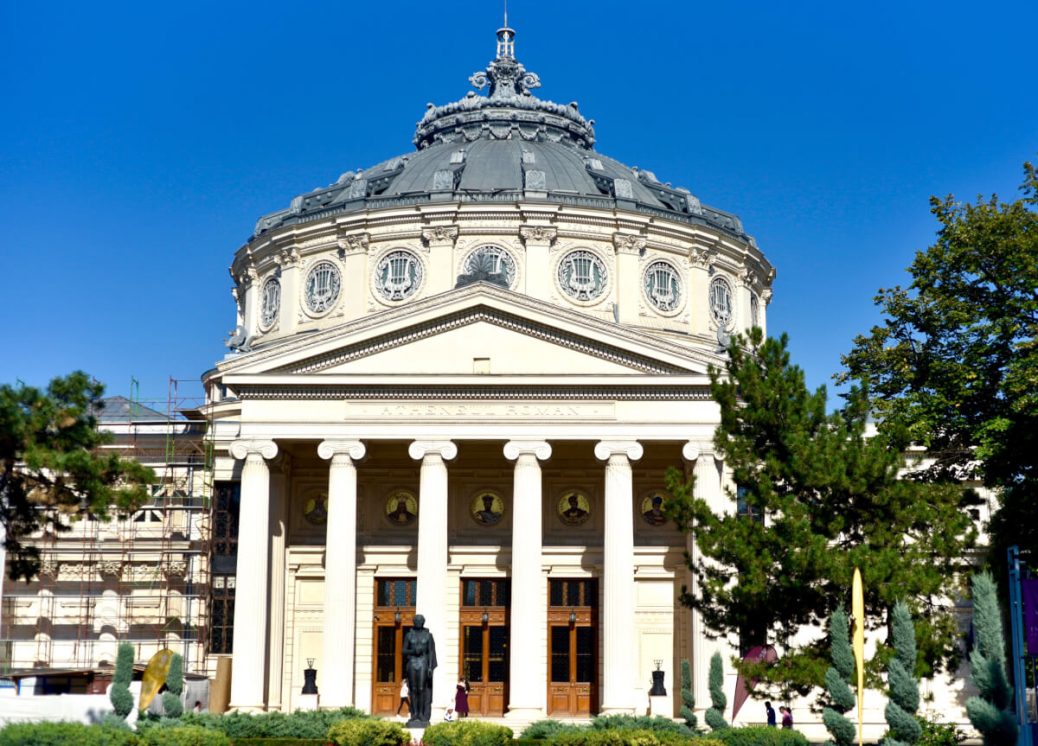PROM 56 Sunday 1 September Berliner Philharmoniker Kirill Petrenko
Anton Bruckner’s grandiose symphonies are not everybody’s cup of Grüner Veltliner. Even now, almost 150 years since the Austrian composer wrote his Fifth Symphony, there will be people – maybe even critics,– who think the work is too long, meandering and/or tedious.
All I can say is that the naysayers need to experience this symphony conducted by Kirill Petrenko with his Berlin Philharmonic Orchestra and they will be reformed, converted and brought into the fold. I have listened to many good recordings of Bruckner’s Fifth, but the Berlin Phil added another dimension to the work. The sold out Royal Albert Hall was presented with contrapuntal complications, jazzy pizzicati, rock n roll riffs, a little bit of incense, oodles of energy and an impish dance that becomes an earworm.
The introduction –plucked basses – was oh, so quiet that I had to cup my ears.
After a few bars the upper strings softly introduce the first of quite a few chorale-like themes that remind us that this is Bruckner’s ‘Symphony of Faith’. Then there is the brass-heavy fanfare which in Petrenko’s brilliant interpretation proceeds from grave to majestic, followed by an exhilarating burst of tutti splendour. The two recurring trademarks of Bruckner’s symphonies are his use of great contrasts and pauses. What function do the pauses have? They slow down the flow of the movement if you conduct them like a rest. Petrenko knows better. The pauses are intakes of breath. Alternatively they feed the tension. Maybe you have to be there in the hall to feel that electrifying energy. The way the main theme time and again crashes in to the proceedings is pure orchestral rock ‘n’ roll – no wonder The White Stripes borrowed (unconsciously?) the seven note riff of the theme for their 2010 hit Seven Nation Army. The song by the rock duo has become a sports anthem of renown and I’m sure some British listeners were reminded of a time when Labour leader Jeremy Corbyn’s name was chanted to the tune of Bruckner’s main theme (¨Oh, Jeremy Corbyn!¨).
The second movement is Schubertian in its melodiousness. The violins sound creamy. Can I write that – creamy violin sound? Bruckner’s instruction for the Adagio is, Sehr langsam, very slow, but Petrenko knows better and keeps a noble pace. A gorgeous, but plaintive oboe plays duplets against triplets in the orchestra and once more that creates a strong sense of duality. We know that Bruckner often felt insecure about his compositions and this was perhaps a way of expressing it.
There is nothing ¨spooky¨about the Scherzo, in contrast to what Stephen Johnson, in his otherwise excellent programme notes, tells us. The second theme of the movement is in the form of a folk dance, a Ländler adn a polka, and it is repeated a number of times. Every time it returns Petrenko adds a new playful twist to it. The last time the dance pops up he just watches the orchestra with a mischievous smile do their thing. We are reminded that Scherzo means jest in Italian.
The Finale puts the full force and capability of this magnificent orchestra on display. There are the pauses that at this point can feel unsettling. Bruckner considered this symphony to be his contrapuntal masterpiece and the fugal intricacies and counterpoint are all over the adagio and the allegro of the movement. The Seven Nation Army is re-introduced, but most interestingly Bruckner incorporates a religious theme, the Dresden Amen, into the proceedings (inspired by Mendelssohn?). This seven note sequence is also heard in his motet Christus factus est and is strongly associated with the Lutheran church. Bruckner was a deeply religious Catholic, but he loved his (protestant) Bach.

In the end we return to the main theme from the first movement. The Berliner Philharmoniker played the conclusion of this work as if it is the mother of all finales. And it probably is. When the music stopped with a great ka-boom, the audience was so pumped up that their very prompt cheering and very loud clapping clearly took the orchestra by surprise. Well, more than 5,000 people can make a lot of noise. Anyone who has heard a football crowd sing Seven Nation Army in a Football Stadium knows what I’m talking about.
There are so many Berliner orchestral soloists that deserve a mention, from the oboeist, flautist to the horns, but it would be a bit unfair to all the other musicians to single out one The point is that this was not only the best Bruckner concert that I have experienced, but it is also memorable for being one of the greatest ensemble efforts I have ever witnessed. That was due in no small part to the Berlin Phil’s artistic genius and musical magician, Kirill Petrenko.
VISIT MY MAIN WEBSITE TO HEAR A PODCAST ABOUT BRUCKNER 5. I speak to the German conductor Johannes Fritzsch who has conducted quite a few of Bruckner’s symphonies and also heard the great Eugen Jochum conduct a number of the symphonies.



